Open source has become an integral part of business models in numerous organizations regardless of their size and age. For some, the reasons may be ideological, for some pragmatical: OSS brings strategic benefits related to wider spread of software and larger knowledge pool organizations can tap into. A recent study by EUIPO Observatory focusing on open-source software (OSS) usage and licensing confirms such statements.
Based on survey results from 1 364 firms with seat in the EU and activity in software sector, the report analyses how companies make use of open-source software (OSS) licenses to protect business models that rely on OSS licensed software. The survey data also shows that open source software does not limit but rather widens the business opportunities for the organizations based on services and products complementing OSS. Active participation in the communities helps organizations to increase competences of their staff and thus enhance their capacity for innovation.
As for the intellectual property protection, organizations use both informal and formal methods to convert market opportunities into profitable business models. The report says current intellectual property rights system is versatile enough to ease access to knowledge while still preserving the motivation to innovate.
Let’s have a closer look at some of the collected data.
Business Models Combined With OSS
As the graph shows, there are three leading business models combining open source software. Almost half of the companies that take part in the development of OSS or use OSS products benefit from open source software by embedding it in tangible products (46,8 %). The second most popular option is providing services complementing OSS products (39,1 %). Third of firms develops software complementing OSS.
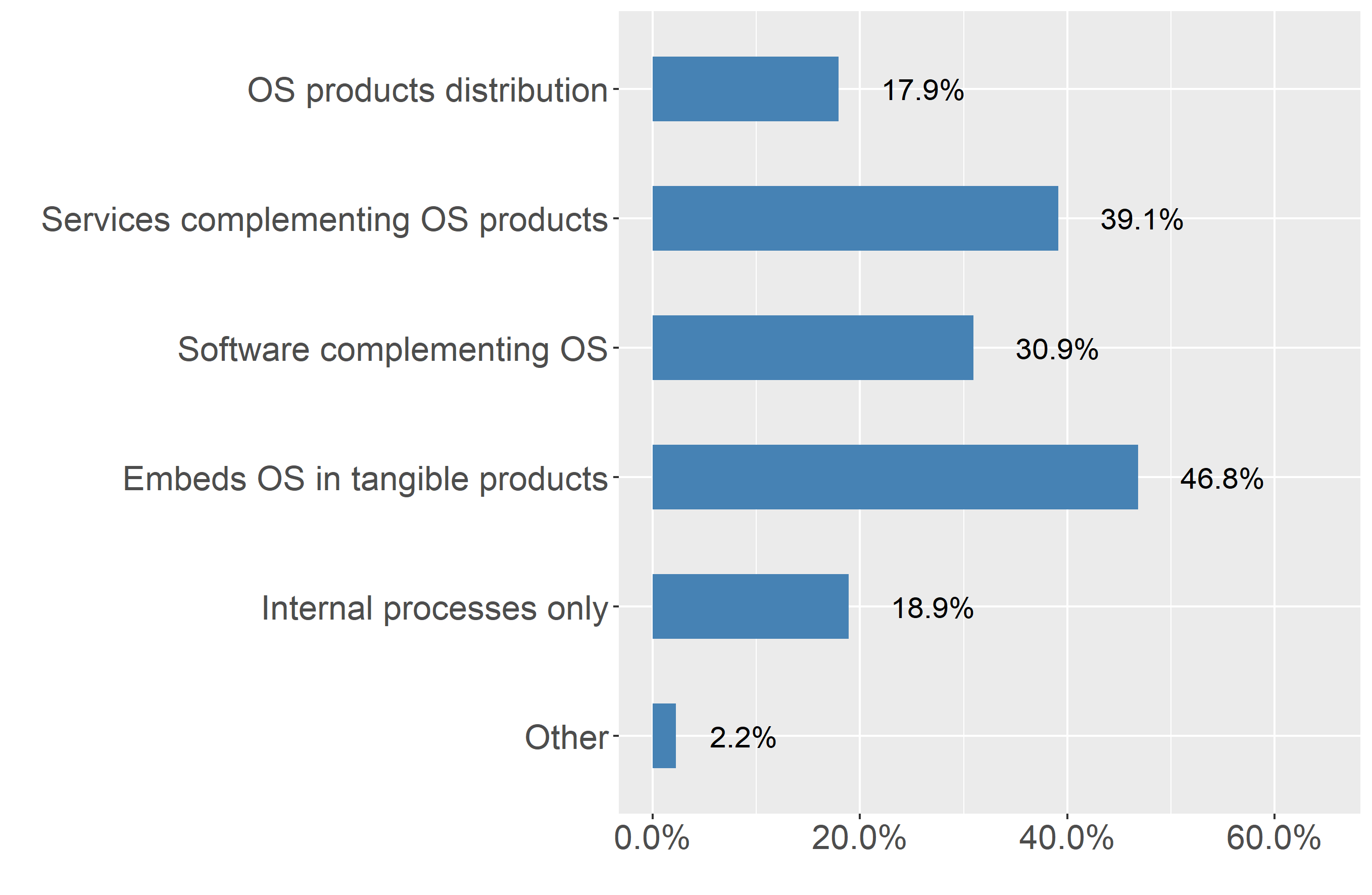
Factors Taken Into Account When Adopting New Software
When making decisions about the adoption of new software in the company there are various factors being considered. Quality is the feature singled out as very or fairly important by 98,5 % of the respondents. Total cost of ownership and compatibility with other software already in use in the organizations are another two factors considered to be very or fairly important.
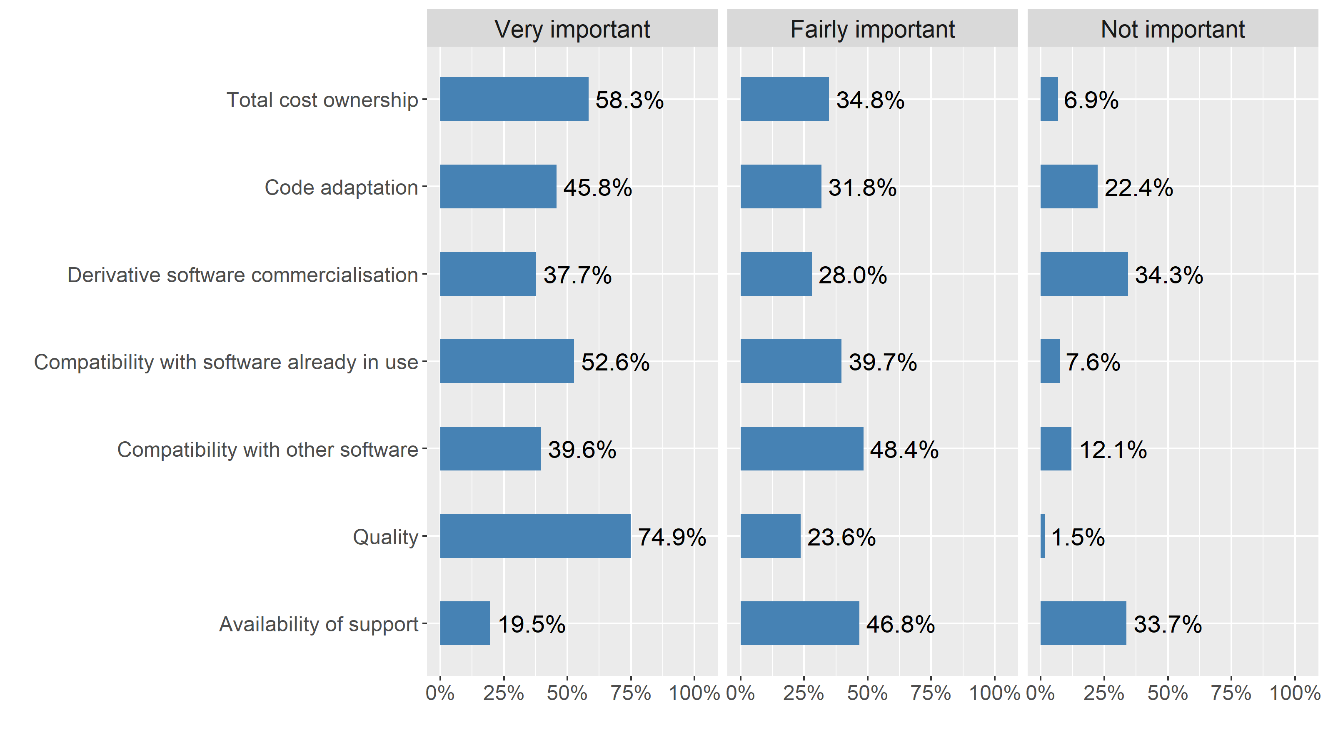
Usage of Licenses for Software Distributed by Firms in the Sample
Proprietary licenses seem to be the most prevalent among the companies that distribute software developed by their employees. Surprisingly, the second most popular are licenses based on the GNU GPL model, which is a restrictive copyleft license. In accordance with this license, derivative software must be distributed under the same or equivalent terms. Other licenses frequently used for the distributed software are permissive licenses not imposing strict requirements such as MIT, LGPL and Apache.
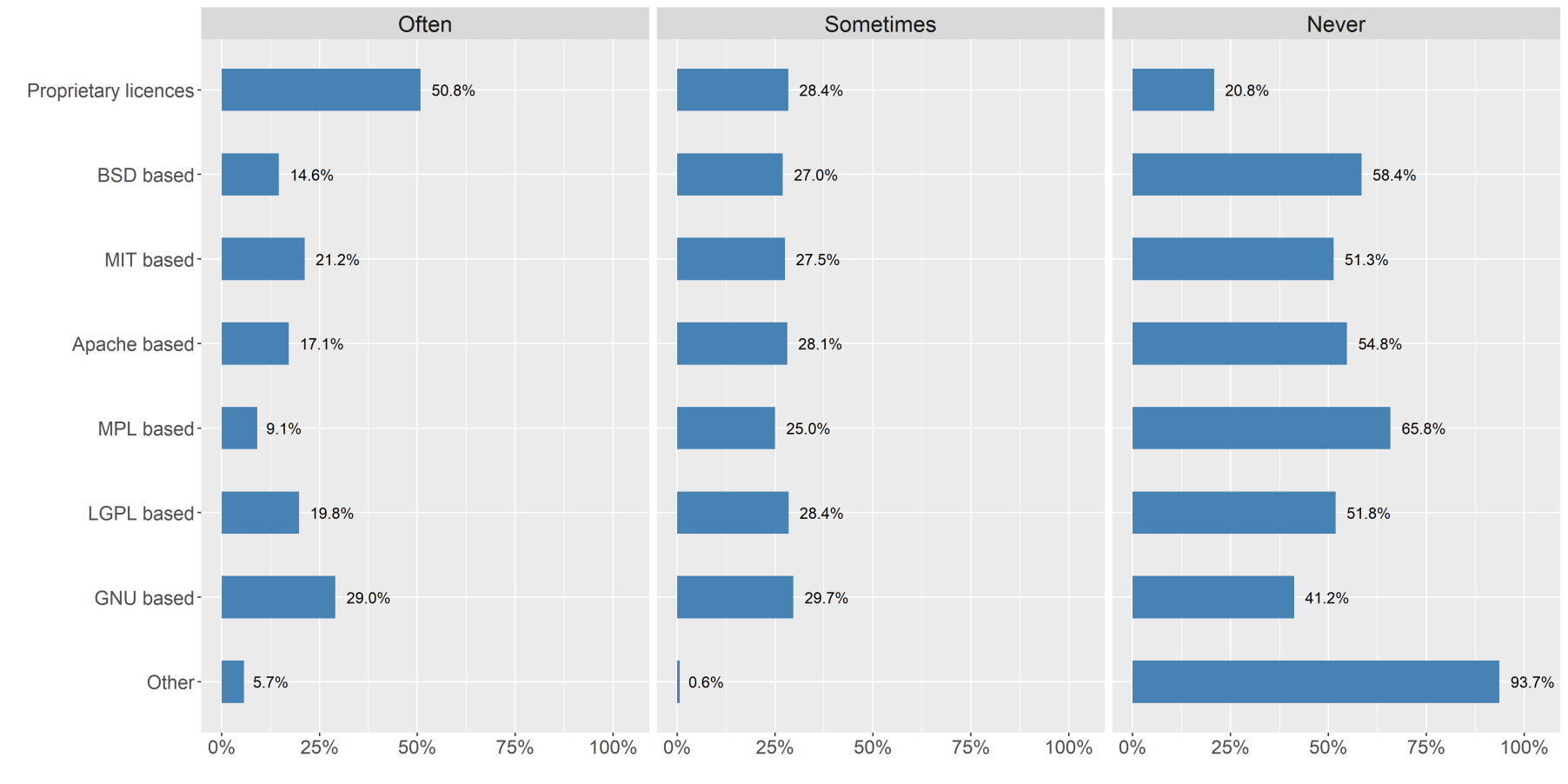
Open Source Products Perception as Regards Current Business Model
As for respondents’ view of OSS and business strategy, most organizations in the sample see OSS mainly as an opportunity for their current business models. Just a few consider OSS to be a threat to their current business.
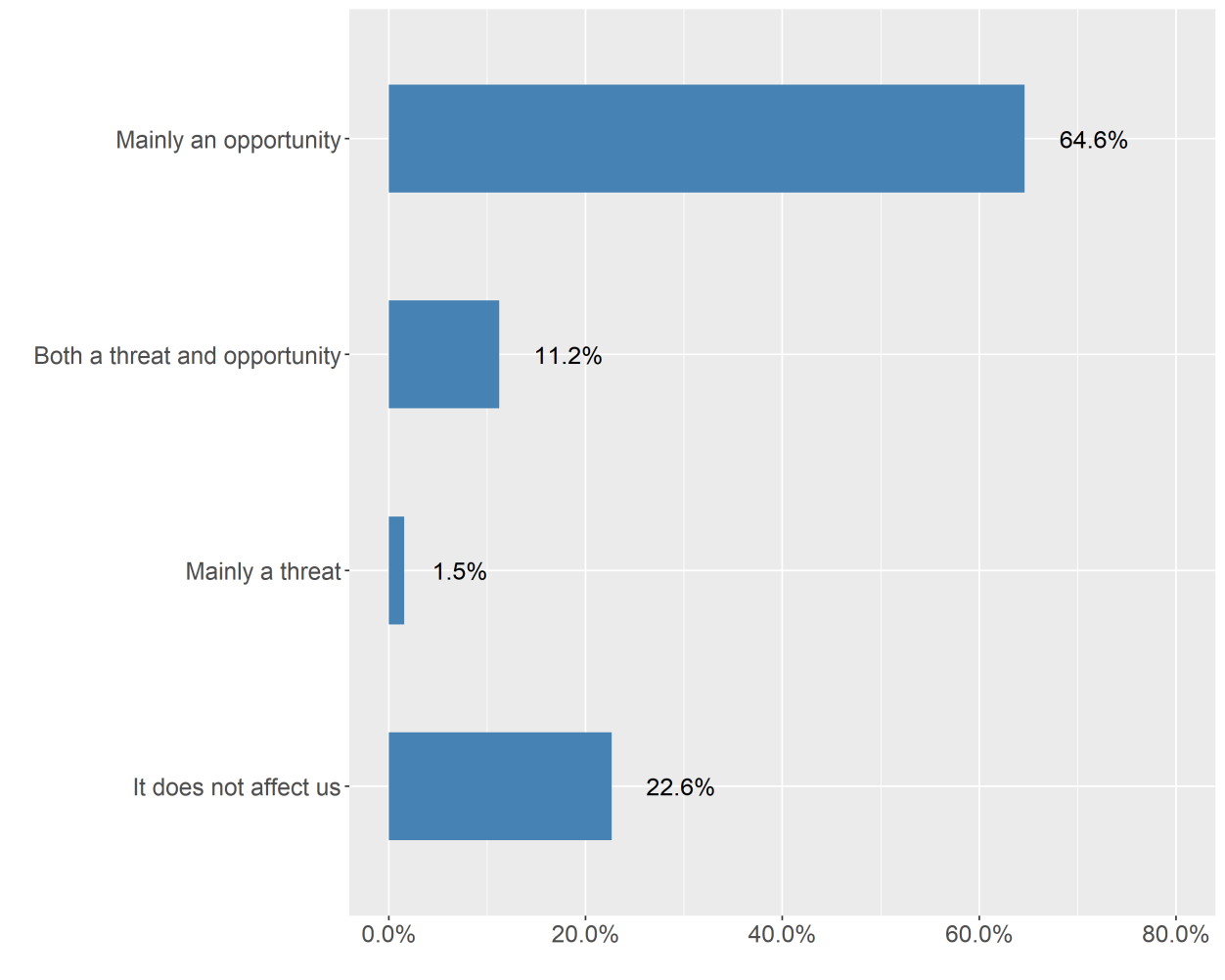
Perception of OSS Attributes
The final part of survey examines the perception of OSS products attributes. Over 80% of respondents agree OS products increase market competition by lowering the entry barriers and enhancing the possibility of software firms to find profitable business models. Almost same amount of respondents agree that open source significantly broadens the choice of suppliers. More than 72% of organizations perceive the cost of OS products (including initial training and maintenance) as lower than the cost of proprietary alternatives. Most of the organizations surveyed did not agree with the statement that OS seriously limits the possibility of software firms to find profitable business models.
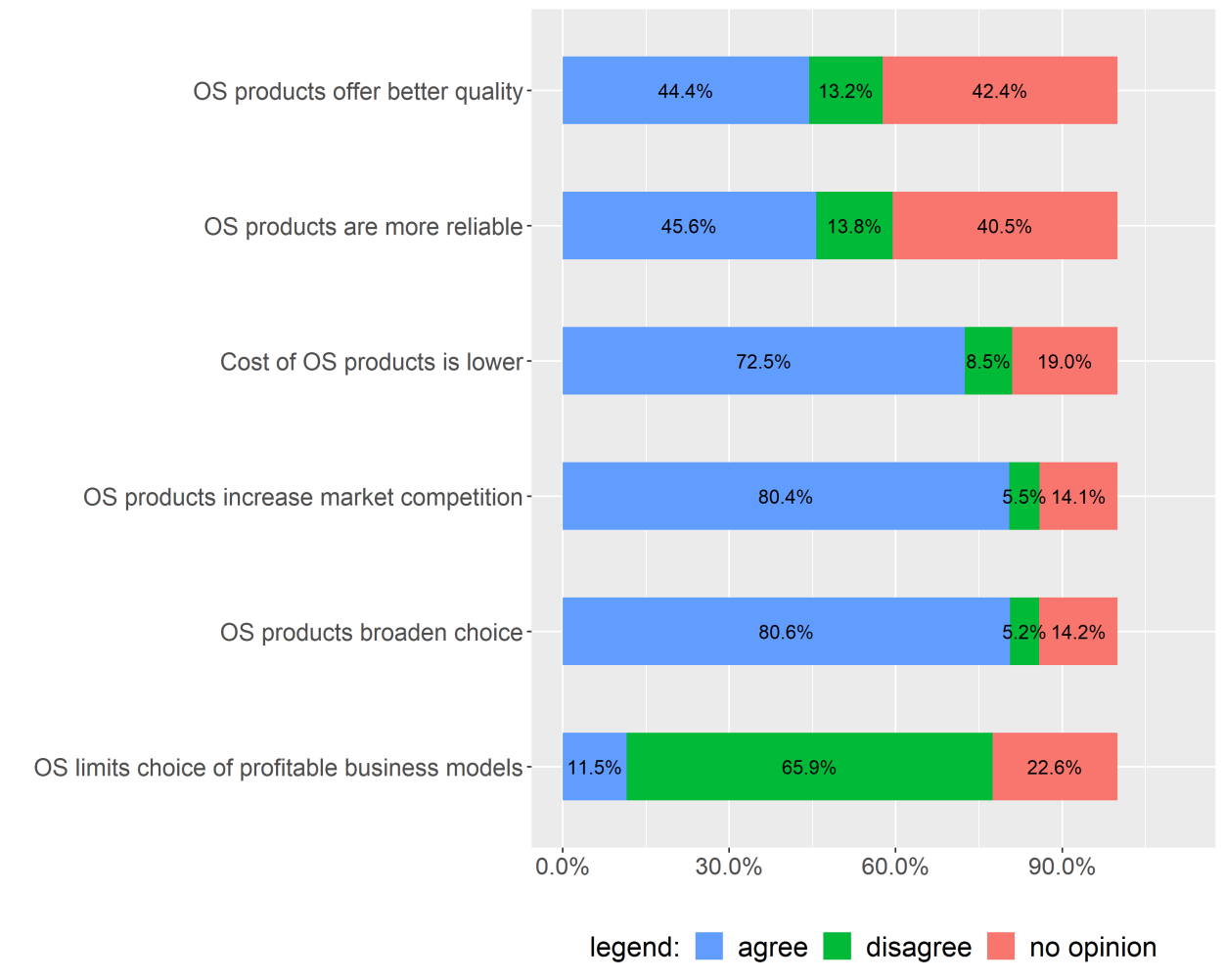
To sum up, the study showed that active participation in OSS product development allows companies to develop customized solutions for their clients more efficiently. Communities built around open source software help organizations to increase knowledge level and innovation opportunities of their staff. The OSS model does not limit the possibilities to develop profitable business models and it shifts the emphasis from software to products and services complementing it. Proper intellectual property protection for complementary goods and services OSS organizations offer is therefore as important as in case of other firms.
Whole EUIPO Observatory study is available here.